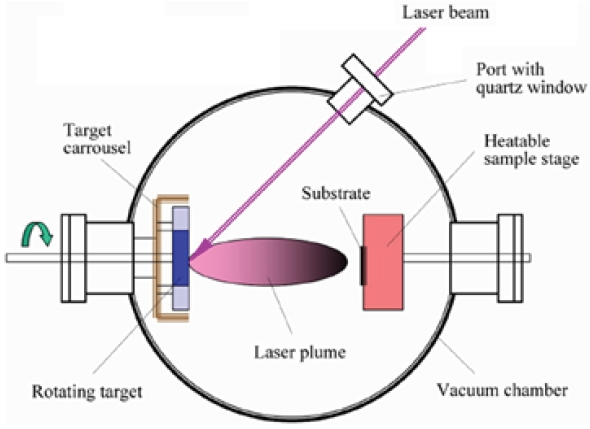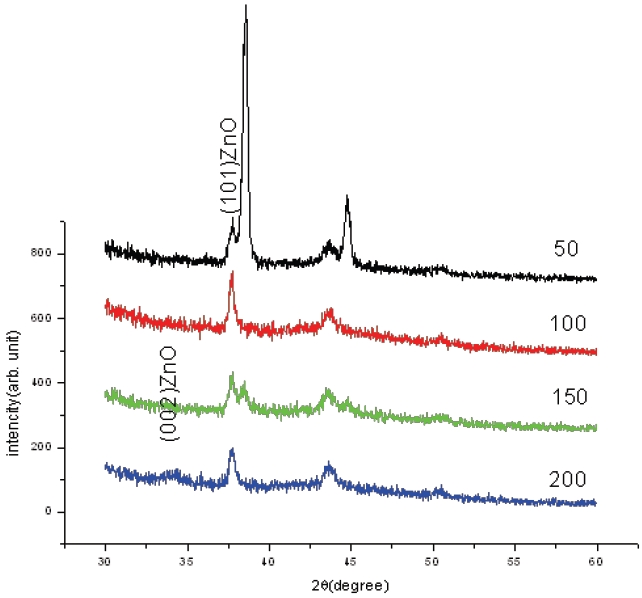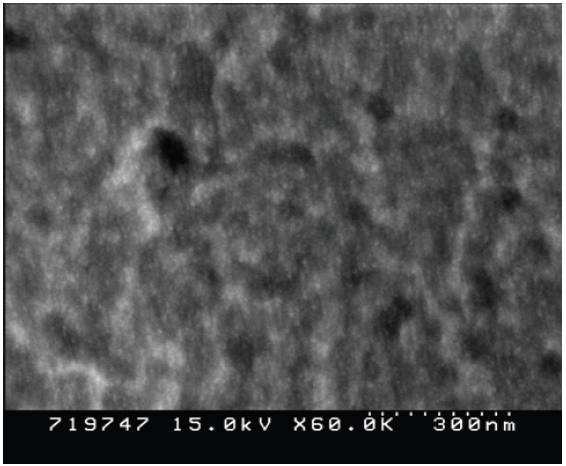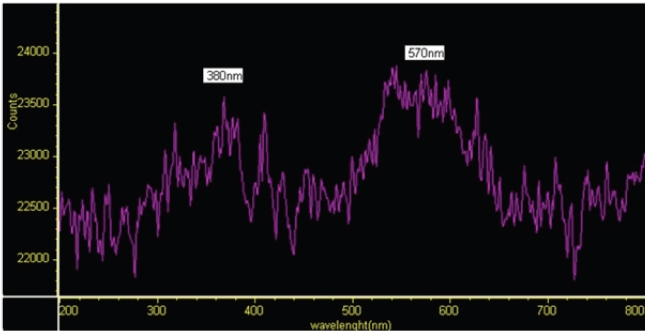



ZnO is a wide-band gap Ⅱ-Ⅵ compound semiconductor and has a hexagonal wurtzite structure [1]. ZnO can be used as SAW (Surface acoustic wave), LED (light emitting diode), TCO (transparent conducting oxide) devices, and a gas sensor because of its various optical and electric characteristics. One of the important characteristics is a wide band gap of 3.37 eV at 300 K, and is an attractive compound for use in ultraviolet light emitting diodes and lasers. It shows pronounced excitonic effects at room temperature due to its large exciton binding energy (59 meV) [2,3].
Various deposition techniques as molecular beam epitaxy, RF magnetron sputtering, chemical vapor deposition, sol-gel, and pulse laser deposition have been used for the production of ZnO thin films with properties for the specific application. PLD (pulsed laser deposition) is expected to be a rather appropriate technique for tailoring the nanostructure of ZnO films during growth because it offers the advantage of producing high quality films at relatively lower temperatures with high deposition rates, process stability, and repeatability [4].
Polymer substrates have attracted attention for a long time because it is a suitable material for the production of the flexible display. However, the high-quality thin film deposition on polymer substrates using high temperature processes is very difficult because most of the polymer material has both a low thermal strain and melting temperature.
ZnO demonstrates good compatibility with plastic or flexible substrate materials because quality polycrystalline films with moderate Hall mobilities (>1 cm2 /Vs) can be made at room temperature [5,6]. Therefore, we have grown the ZnO thin film on polymer substrates of polyethersulfone by PLD at low temperature.
In this study, A Quantel Brillant B Q-switched 4th harmonic Nd:YAG laser (λ=266 nm) with a fluence maximum of 0.7 J/cm2 and a repetition rate of 10 Hz was used to deposit ZnO thin films by PLD. The used laser power density ranged from 0.2 to 0.4 J/ cm2. The chamber for growing was initially evacuated to 10-5 Torr
[Table 1.] The pulse laser deposition conditions.

The pulse laser deposition conditions.
with an oil diffusion pump and a rotary pump. The targets used to deposit thin films were of a ZnO purity of 99.99%. The target was rotated at a constant speed of about 4 rpm so that the laser beam would be irradiated on different areas. The substrates were located 50 mm away from the target at varying temperatures in a 50~200℃. A PES (polyethersulfone) of 1 cm × 1 cm × 0.2 cm was used as flexible substrate. In order to remove organic particles, PES substrates were cleaned in an ultrasonic bath with isopropyl alcohol and distilled water for 30 seconds, and then dried by a N2 gun. Figure 1 is a schematic diagram of the PLD system used in this study. The pulse laser deposition conditions are shown as Table 1.
Structure properties of film were investigated by X-ray diffraction (XRD). ZnO thin film surface properties were observed by scanning electron microscopy (SEM). The optical properties of
the ZnO thin film were characterized by photoluminescence (PL).
The thickness of the grown ZnO thin films was measured as approximately 200 nm in this study.
Figure 2 shows XRD patterns of the ZnO thin film deposited with a laser density of 0.3 J/cm2 at a substrate temperature of 50, 100, 150, and 200℃, respectively. The (002) peak of ZnO is almost not observed at temperatures of less than 200℃. It is thought to cause an imperfect bond of oxygen and zinc by the lack of thermal energy supplied to the substrate. It seems that the crystallinity of ZnO thin film improves if oxygen supply or substrate temperature is increased.
Figure 3 shows the SEM image of the ZnO thin film deposited at a substrate temperature of 200℃ and a laser density of 0.3 J/ cm2. The surface of thin film shows high roughness and porosity for requisite oxygen vacancy in regards to the oxygen-zinc bond. This result is consistent with the (101) peak of XRD shown as Fig. 2.
Figure 4 is the PL spectra of the ZnO thin film deposited at a substrate temperature of 200℃ and a laser density of 0.3 J/cm2. The PL is measured at room temperature when the ZnO thin film exhibits PL intensity at 380 nm and 570 nm wavelength. The peak of 380 nm is smaller than the peak of 570 nm. This is caused by point defects. UV luminescence at approximately 380 nm is produced by exciton annihilation. The broad photoluminescence at about 570 nm has actually been reported by many researchers in bulk ZnO as well as in ZnO quantum dots. However, the exact origin of this emission band has still not been fully understood. It seems that the green emission to point defect by oxygen vacancy occurs.
In this study, ZnO films have been grown on PES (polyethersulfone) substrate by pulsed laser deposition. When ZnO thin films are deposited at low temperature with a small laser power density, the (002) peaks of XRD to signify the crystal quality of ZnO thin films are shown to be very weak and the (101) peaks to signify the chemical composition of oxygen and zinc are strong. The (002) peaks of XRD increase with the substrate temperature and laser power density because the energy needed for the supply of the combination regarding zinc and oxygen has increased. However, excessively increasing the laser density reduces the deposition rate with the film thickness. The best condition for growing ZnO thin film on PES is at a substrate temperature of 200℃ and with a laser density of 0.3 J/cm2 in this study. The characteristics of PL were measured by UV and green luminescence.




